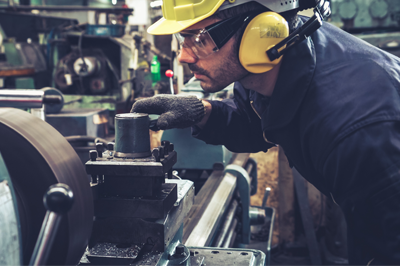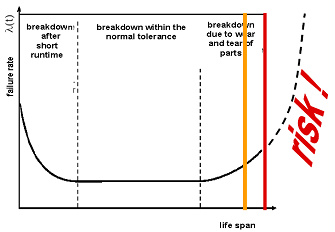
There are many machines in operation right now that have old technology. Automation has been around since the 50’s, but the modern era of automation really started in the 1980’s. Many of these machines haven’t been updated since that time – more than 30 years. Over time, these machines tend to have little problems arise here and there, and frankly, the hardware can be very difficult to support and often impossible to repair due to older technologies going obsolete. Imagine trying to get support for your personal computer that you had 30 years ago! Even worse, imagine trying to repair that computer. It is quite a challenge to ensure that multiple machines that are decades old continue to run at optimal levels at all times. When problems with old machinery occur, plant managers not only must think about the money it costs to repair the machine, but the money lost in production while the machine is offline. For example, when a system is in place to produce XYZ, that system is only profitable if it is operational. The time when the machine is operating is known as uptime. Managers generally know the cost per hour or even per minute when the system is not operational. It could be thousands of dollars per day, or more. Needless to say, maximizing uptime is critical for productivity in a plant. At some point, a manager must make a decision between having a machine that they will need to repair on a regular basis, or just retrofitting the machine with a newer product.
Let’s take a look at an example. A plant loses $1000 an hour when the machine is not in operation. Something fails and it takes a full 24 hours to get it back up and running. That is equivalent to $24,000 lost in production. In this scenario, the product to repair may cost $1,000. This equals a total of $25,000 cost for the repair - $1,000 for the part and $24,000 in lost production. This is a best case scenario. Other situations aren’t as easily solved. There could be a scenario where the product you need to repair the machine doesn’t exist. Something needs to be custom built and the plant operator needs to wait eight weeks and pay a hefty sum for the repair. In some of these situations where uptime is lost for a significant amount of time, it can be much less expensive to replace the machine with a more modernized product, also known as retrofitting. Every time the aging machinery needs something replaced, it costs the operator $1,000 an hour in lost production. It’s simple economics. However, if the person running the machine knows it will only be used for another year, a retrofit doesn’t make much sense. Every situation is unique, but in order to maximize uptime, we’re seeing more situations where retrofitting is the most sensible solution as old technology continues to age.

Another reason to consider retrofitting, along with the amount of uptime that is lost through multiple repairs, is energy efficiency. Machines from 20 years ago are not as energy efficient as the ones that are being produced today. Lower energy costs can be realized with proper retrofitting and from that a reduction of a plant’s carbon footprint. Additionally, retrofitting will continue to grow as safety regulations and standards continue to become stricter. Machines built in the 1980s weren’t up to the safety standards we see today. As the industry began to see this between 10-15 years ago, safety modifications were made. Unfortunately, these safety modifications were generally made at the cost of causing the machinery to be less productive. With today’s technology, however, we’re able to retrofit machines so that they are not only safer than ever, but at the same time, maintain a maximum level of productivity. We can protect our workers better with newer technologies.
Finally, the concept of preventative maintenance can be implemented by retrofitting some of these older machines. Controllers can be implemented that gather data from sensors to predict problems and then interface with databases to capture machine trends and other quality information. Problems can be caught before they become more expensive problems. Machines can have expected lifespan charts made for them, showing that after 5-15 years the cost of maintenance goes way up, along with the risk. By implementing the latest technologies, machines can now embrace Industry 4.0 and the “Internet of Things” by collecting more data that is used for production information and preventative maintenance. The benefits of retrofitting old technology in order to maximize plant uptime are clear as we continue to move forward.

